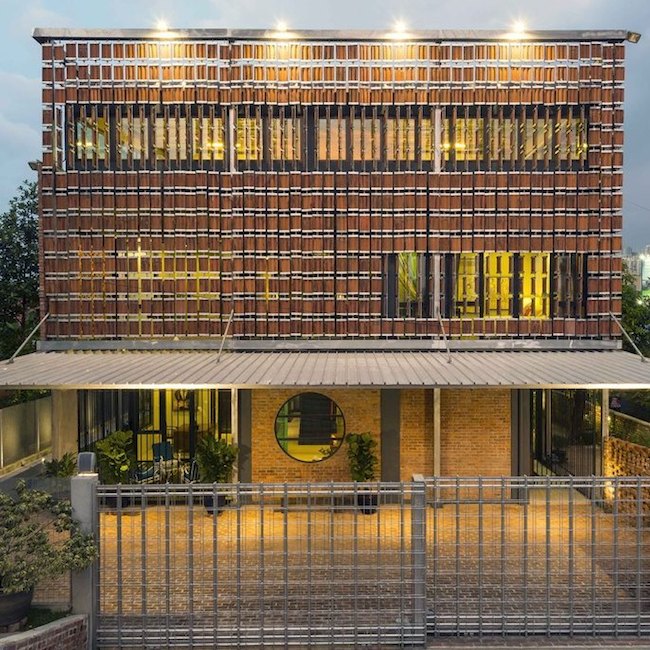PETALING JAYA, MALAYSIA — Architect Dr Tan Loke Mun recently completed renovations on a home in Malaysia, finding a clever use for a trove of original tile.
Dubbing it “The Clay Roof House” the architect states that a family bought a dilapidated home in the older suburbs of Petaling Jaya. The Indian clay tiles were in good condition. Since the home faced the west, Loke Mun decided to use the tiles in a vertical screen to block the morning and afternoon sun.

The tiles were removed and attached to steel rods that still allowed them to swivel and turn. Keep an eye open for that feature; the pictures we’re running in this post aren’t repeats. In addition to comfort and energy-saving uses, the screen also creates a light dappling effect in the home’s interior.
“This transformed the house into an insulated and well-ventilated cube comprising volumes of spaces within a unique facade of roof tile and lattice brick work screens that shields the inside from the outside.”
This is yet another addition to our growing collection of posts about buildings that use brick or tile screens. As is the case with the Clay Roof House, screens often serve a practical purpose first. For Mun’s home it saves on energy costs and regulates temperature inside the house. In Iran Admun Design and Construction Studio used a screen to give residents more privacy than they could otherwise expect in a heavily populated urban neighborhood. Only the Saint Roch Car Park and the Cultural Center La Gota use screens for purely decorative reasons. We’re curious to see what our readers think about these. Is aesthetic alone strong enough to justify a screen, or are you more intrigued by their practical functionality?

Click to see a larger image.
Dr Tan Loke Mun, is principal of DrTanLM Architect and Director of ArchiCentre Sdn. Bhd, according to his biography. The architectural design studio operates out of Kuala Lumpur, Malaysia where they are involved in a large variety of high profile work. He is a Past President of the Malaysian Institute of Architects (PAM), Past Chairman of the LAM-PAMGreenBuilding and Sustainability Committee, Past Member of the GBI Accreditation Panel (GBIAP) and also a member of the Board of Architects Malaysia.
Dr Tan studied at Taylor’s College, Kuala Lumpur and obtained his architectural training from Deakin University and later his doctorate from Melbourne University, Australia. Dr Tan’s doctoral studies were in social and self help housing and he has worked in most parts of urban and rural Australia, Uruguay, Argentina and Brasil.
What do you think of this use of contemporary ceramics in architecture? Let us know in the comments.








Add your valued opinion to this post.